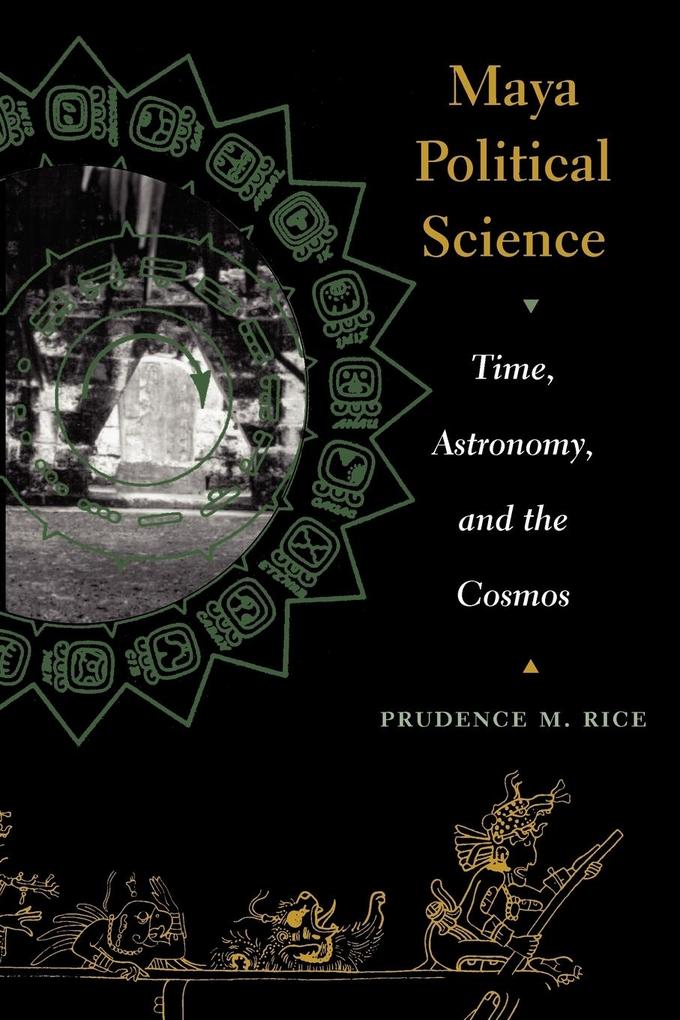How did the ancient Maya rule their world? Despite more than a century of archaeological investigation and glyphic decipherment, the nature of Maya political organization and political geography has remained an open question. Many debates have raged over models of centralization versus decentralization, superordinate and subordinate status-with far-flung analogies to emerging states in Europe, Asia, and Africa. But Prudence Rice asserts that neither the model of two giant "superpowers" nor that which postulates scores of small, weakly independent polities fits the accumulating body of material and cultural evidence.
In this groundbreaking book, Rice builds a new model of Classic lowland Maya (AD 179-948) political organization and political geography. Using the method of direct historical analogy, she integrates ethnohistoric and ethnographic knowledge of the Colonial-period and modern Maya with archaeological, epigraphic, and iconographic data from the ancient Maya. On this basis of cultural continuity, she constructs a convincing case that the fundamental ordering principles of Classic Maya geopolitical organization were the calendar (specifically a 256-year cycle of time known as the may) and the concept of quadripartition, or the division of the cosmos into four cardinal directions. Rice also examines this new model of geopolitical organization in the Preclassic and Postclassic periods and demonstrates that it offers fresh insights into the nature of rulership, ballgame ritual, and warfare among the Classic lowland Maya.
Inhaltsverzeichnis
- Preface
- Note on Orthography and Dates
- Acknowledgments
- 1. Introduction: Approaches to Maya Political Organization
- Explanation, Analogy, and the Direct-Historical Approach
- Sources for a Direct-Historical Approach: A Critical Review
- Classic Period Hieroglyphic Inscriptions
- Native Texts of the Postclassic and Colonial Periods
- Spanish Colonial Documents
- Dictionaries
- Modern Ethnography
- Maya Cosmology and Worldview
- 2. Previous Reconstructions of Classic Maya Political Organization
- Early Thoughts
- The Political Geography of the Yucatan Maya
- Twentieth-Century Ethnography
- Site Size and Size-Hierarchy Models
- Inscription-based Models
- The Importance of Emblem Glyphs
- Emblem Glyph-based (and Other) Decentralized Models
- Emblem Glyph-based Centralized Models
- Time and Its Cycles
- 3. Maya Politico-Religious Calendrics
- Maya Cosmology and Calendrical Science
- Maya Calendars
- Calendrical Origins
- Calendrical Transformations
- The Postclassic Maya May
- The May and Its Seats
- The Books of the Chilam B'alams and Rituals of the May
- Overview
- 4. Tikal as Early Seat of the May
- Preclassic Ritual Architecture and K'atun Seats
- Early Classic Tikal and Its Rulers
- The Institution of Kingship
- Tikal's Dynastic Founding
- Tikal's Name and Emblem Glyph
- The Dynasty Continues
- The Central Mexican Presence
- Tikal in the Middle Classic Period
- The Meaning of the Middle
- Overview
- 5. Tikal's Late and Terminal Classic Seating of the May
- Tikal as Late Classic May Ku
- Twin-Pyramid Groups
- Tikal's Late Classic Monuments
- Late Classic Period-ending Monuments in Tikal's Realm
- Interpretations: Tikal's Late Classic May Seating
- Tikal and Its May Realm in the Terminal Classic Period
- Monuments and Themes
- Other Sites in Tikal's Terminal Classic May Realm
- Overview
- 6. Other Classic Period May-based Realms
- CopÁn, Honduras, and QuiriguÁ, Guatemala
- Calakmul, Campeche, Mexico
- Other Sites and Regions
- Caracol, Belize
- Palenque and ToninÁ, Chiapas, Mexico
- Dos Pilas, PetÉn, Guatemala
- Overview
- 7. New Terminal Classic May Realms
- The Southern Lowlands
- Seibal as May Ku: Structure A-3 Monuments
- Lake PetÉn ItzÁ
- Ucanal
- The Northern Lowlands
- The Puuc Region
- Chich'en Itza, YucatÁn
- DzibilchaltÚn and CobÁ
- Overview
- 8. Implications of the May Model
- Identifying the May
- Calendrical Rituals Involving Fire
- Burner Rituals
- New Year's Ceremonies
- Fire Walking
- Ballcourts and the Ballgame
- Maya "Warfare"
- Dual Rulership
- Overview
- 9. Conclusion
- Origin and Operation of the May System
- The Classic Maya: A Theocratic State
- Bibliography
- Index














